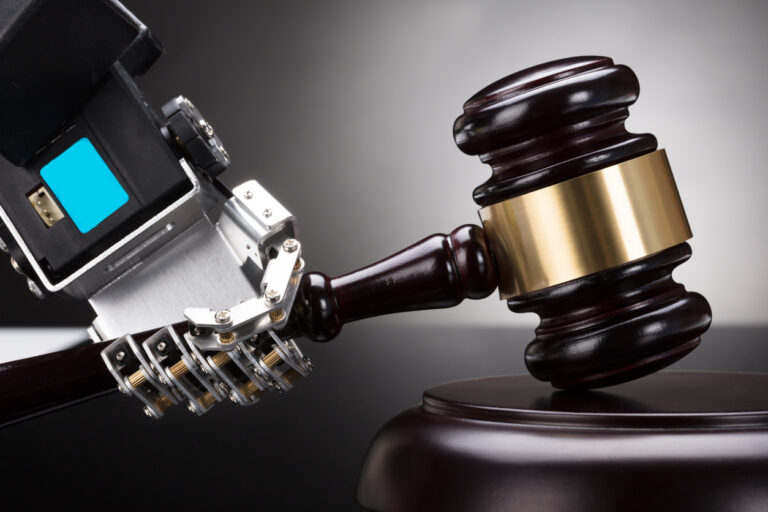The application of artificial intelligence (hereinafter: AI) is rapidly influencing and transforming several fields of our society, such as science, business, and even medicine (Pannu, 2015). As enthusiasts are continuously experimenting with new ways to create value, several opportunities in other industries are yet to be discovered. Speculations arise about AI entering one of the most emotionally sensitive workplaces in our society: the courtroom. Since the legal industry is filled with large amounts of data and huge textual files, there seems to be a lot of opportunity for improvement through AI. However, legal experts seem somewhat reserved: would introducing AI into the courtroom be a threat to the justice system, or an opportunity to improve it?
AI-driven judges …
Our current justice system contains several limitations, for example with reference to jurisdiction, which is the process of a court coming to a judgment in a disputed matter. A seemingly unlimited and growing amount of data, large files, and relevant case law cause this process to be inefficient, time-consuming, and subjective (Elstgeest, 2020). One might think that a possible solution to these problems would be the introduction of AI-driven judges and having them replace human judges. AI-driven judges could provide fast data-driven assessments of disputes, and therefore could be more accurate and objective in their decision-making than human judges (McKay, 2020). However, a large share of organisations and individuals involved in jurisdiction seem to put up a lot of resistance against this idea, as they fear that AI will eventually take over control and don’t trust algorithms to make human, ethically responsible decisions (Elstgeest, 2020). All in all, they believe that AI-driven judges might cause more harm to the right to a fair trial, one of the fundamental principles of our justice system, than they would do good.
… or other applications?
Because of the previously mentioned objections, introducing AI-driven judges might not be the right solution to improve the limitations of the current justice system. However, this does not mean that there is no place at all for AI in the courtroom at this moment. For example, by assisting judges, lawyers, and district attorneys in discovering patterns in data and selecting relevant case law, AI can prove to be a relevant and useful tool in increasing efficiency and speed in the courtroom (Elstgeest, 2020). While exploring AI-related opportunities, clear ethical guidelines should be set out, decision-making should be clear and explainable to human rationale, and AI-tools should be monitored and updated frequently (Elstgeest, 2020). In that case, AI can benefit the right to a fair trial, and therefore improve the justice system as a whole.
References
Elstgeest, M., 2020. AI biedt kansen in de rechtspraak. [online] ibestuur.nl. Available at: <https://ibestuur.nl/podium/ai-biedt-kansen-in-de-rechtspraak> [Accessed 5 October 2021].
McKay, C., 2020. Predicting risk in criminal procedure: actuarial tools, algorithms, AI and judicial decision-making. Current Issues in Criminal Justice, 32(1), pp.22-39.
Pannu, A., 2015. Artificial intelligence and its application in different areas. Artificial Intelligence, 4(10), pp.79-84.

